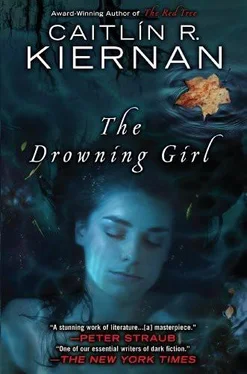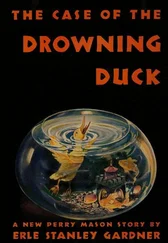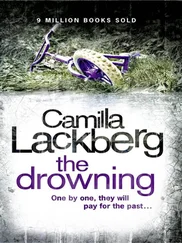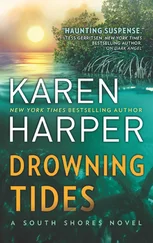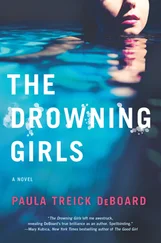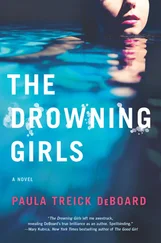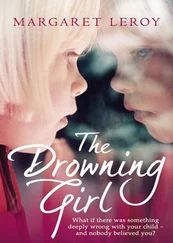Caitlín Kiernan - The Drowning Girl
Здесь есть возможность читать онлайн «Caitlín Kiernan - The Drowning Girl» весь текст электронной книги совершенно бесплатно (целиком полную версию без сокращений). В некоторых случаях можно слушать аудио, скачать через торрент в формате fb2 и присутствует краткое содержание. Год выпуска: 2012, ISBN: 2012, Издательство: Roc / New American Library, Жанр: Фэнтези, на английском языке. Описание произведения, (предисловие) а так же отзывы посетителей доступны на портале библиотеки ЛибКат.
- Название:The Drowning Girl
- Автор:
- Издательство:Roc / New American Library
- Жанр:
- Год:2012
- ISBN:978-0-451-46416-3
- Рейтинг книги:5 / 5. Голосов: 1
-
Избранное:Добавить в избранное
- Отзывы:
-
Ваша оценка:
- 100
- 1
- 2
- 3
- 4
- 5
The Drowning Girl: краткое содержание, описание и аннотация
Предлагаем к чтению аннотацию, описание, краткое содержание или предисловие (зависит от того, что написал сам автор книги «The Drowning Girl»). Если вы не нашли необходимую информацию о книге — напишите в комментариях, мы постараемся отыскать её.
The Drowning Girl — читать онлайн бесплатно полную книгу (весь текст) целиком
Ниже представлен текст книги, разбитый по страницам. Система сохранения места последней прочитанной страницы, позволяет с удобством читать онлайн бесплатно книгу «The Drowning Girl», без необходимости каждый раз заново искать на чём Вы остановились. Поставьте закладку, и сможете в любой момент перейти на страницу, на которой закончили чтение.
Интервал:
Закладка:
Hemingway said to write about the weather.
Imp stopped and stared at what she’d written.
“You’re a very beautiful woman,” I told Abalyn. Then I said, quickly, because it immediately occurred to me how that could be taken the wrong way, “Not that beauty matters. Not that it has anything to do with whether or not—”
“It’s okay. I know what you meant,” Abalyn said, holding up her left hand and interrupting me.
“You do?”
“Probably. Close enough.”
“Have you ever regretted it?” I asked, knowing I shouldn’t, but the words tumbling out before I could stop them from coming.
Abalyn sighed loudly and turned her head, looking out the window instead of at me. “Only once or twice,” she said very softly, almost whispering. “Not often, and not for very long. I doubt I’ve ever made a decision I didn’t regret somewhere down the line, but it was the right thing to do. It was the only thing to do.”
I don’t want to write any more about this. At least, not right now. I’ll probably have to come back to it later, even though I’d prefer not to. I don’t like thinking of Abalyn this way. I dislike remembering how self-conscious and awkward she could be at times, and the expression she’d get whenever we’d be out and some asshole would say something hateful or inconsiderate. Or called her sir . I don’t like remembering the way that hurt her. Hurts her. I’m sure it still does; I’m just not around to see, and I don’t like dwelling on that, either. That’s only normal. Missing people you still love, and not wanting to see them in pain and angry and humiliated.
I wish I could be merciful, and leave Abalyn out of the ghost story entirely.
But just like Rosemary and Caroline, Phillip George Saltonstall and Albert Perrault, she’s part of the tapestry, and I can’t tell my story without telling part of hers. She’s part of mine. If Abalyn ever writes her own ghost story, I’ll have to be part of it, and I’m pretty certain she knows that. I wouldn’t hold it against her.
We drank our tea and ate our breakfast, and the conversation turned to video games, and how I’d never owned a computer. When the kitchen began to get too warm (no air-conditioning), we moved to the sofa. She lectured me on MMORPGs and the pros and cons of various consoles, and the relative merits of PCs and Macs. She patiently explained glitches and gigabytes and how she regretted having been too young in the eighties to have been in on the Golden Age of the Video Arcade. It went on like that for hours. I kept up, for the most part. And I began to understand why Abalyn lived the way she did, writing reviews for video games, avoiding conventional workspace. She felt safe cloistered in front of her monitor or television screen, with no prying, uninvited eyes studying her, drawing unwelcome, uninformed conclusions. I would never begrudge her that privacy. Not ever.
Back to Phillip George Saltonstall.
Back to The Drowning Girl .
My ghost story is filled with significant moments that I would only become aware were significant moments in hindsight. Perhaps this is always the way of it. I can’t say, because I’ve only ever lived my one haunting. I have a single data point. Still, I would stress mine’s not a simple haunting, obviously. The sort you usually read about or hear around a campfire. I didn’t merely feel a sudden and inexplicable chill in a dark room. I didn’t wake to the sound of rattling chains or moaning. I was not shocked at an ectoplasmic woman drifting down a corridor. Those are only cartoons, caricatures of phantoms, invented by people who’ve never suffered (or been graced by) an actual, true, factual haunting. Of that I’m very certain.
So, this, then, is a significant event, and, in time, its significance would be made plain to me. But first it was only an anecdote or an interesting story that my grandmother told me.
L’Inconnue de la Seine .
I don’t speak French. I had a year of it in high school, but I wasn’t very good at it (as with so many other subjects), and I’ve forgotten almost all I did manage to learn. But Caroline, she spoke French. When she was a young woman, she’d gone to Paris and Mont Saint-Michel, Orléans and Marseille. She had photographs and picture postcards. She had a box of souvenirs. Sometimes she’d take them out and show them to me. She had stories of France. She told me one when I was nine years old.
I treasure her stories of France, as I seriously doubt I’ll ever be able to go there myself. Travel isn’t as cheap or easy as it once was, and I don’t like the idea of being on an airplane (I’ve never flown).
I was in Girl Scouts, working on my first-aid merit badge. One day, a woman came to our scout troop, from a hospital in Providence, and she taught us CPR with a rubber dummy she called Resusci Anne. We learned how to properly administer chest compressions, and how to press our lips to the dummy’s lips and breathe our breath into it. How we would breathe into the mouth of someone who’d stopped breathing after a heart attack. Rosemary was busy that day—I don’t recall why—and Grandmother Caroline picked me up after the meeting.
Caroline drove this huge car, a Dresden blue 1956 Pontiac Star Chief, and I loved riding in the wide backseat. That car was the antithesis of my crappy little Honda. The speedometer went all the way to something like 120 miles per hour. It glided so smoothly along the road that you hardly ever felt a bump or a pothole. Rosemary sold it to a collector in Wakefield right after my grandmother committed suicide, and I’ve often wished she hadn’t, that it had been passed to me. Of course, gas is so expensive now, and I’m sure the Star Chief got lousy mileage, so I probably couldn’t have afforded to drive it. I can’t afford to go to Paris, or to drive Caroline’s lost Star Chief.
We went back to her house, and while I was trying to make sense of my math homework, after I’d told her about Resusci Anne, she told me about l’Inconnue de la Seine .
“The dummy had a very distinctive face, didn’t it?” she asked me, and I had to think about the question for a moment. “Not just any old generic face,” Caroline added. “Not like a face someone made up, but a face that must have been the face of a real human being.” In hindsight, I realized that she was right, and I told her so.
“Well, that’s because it wasn’t a made-up face,” she said. And then she told me the story of a drowned girl who’d been found floating in the river Seine in the 1880s or 1890s. The body was discovered near the quai du Louvre, and taken to the Paris Morgue.
“The woman was very pretty,” Caroline said. “She was beautiful. Even after all that time in the river, she was still beautiful. One of the morgue assistants was so smitten with her that he made a death mask. Copies of the beautiful girl’s face were sold, hundreds and hundreds of them. Almost everyone in Europe knew that face, even though no one ever did learn who she’d been. She might have been anyone. Maybe a girl who sold flowers, or a seamstress, or a beggar, but her identity is still a mystery. No one came forward to claim the corpse.”
By this time, I’d completely forgotten about the confusing tedium of my homework, and was listening with rapt attention to my grandmother. She said she’d seen a copy of the mask when she was in Paris in the 1930s. Stories and poems and even a novel were written about l’Inconnue de la Seine (which she translated as “the unknown woman of the Seine,” although Babel Fish tells me it should be translated as “the unknown factor of the Seine.” It also tells me that “the unknown woman of the Seine” in French is Le femme inconnu du Seine . Maybe it’s right, but I don’t trust a computer program as much as my dead grandmother). She said one story had been written from the point of view of the dead girl, as she floated down the river. In the story she doesn’t remember who she was when she was alive. She can’t even remember her name. She’s become a new sort of being, one that must live always at the bottom of the river, or in the sea. But she doesn’t want to live like that, so she lets herself rise to the surface, where she quickly drowns on air.
Читать дальшеИнтервал:
Закладка:
Похожие книги на «The Drowning Girl»
Представляем Вашему вниманию похожие книги на «The Drowning Girl» списком для выбора. Мы отобрали схожую по названию и смыслу литературу в надежде предоставить читателям больше вариантов отыскать новые, интересные, ещё непрочитанные произведения.
Обсуждение, отзывы о книге «The Drowning Girl» и просто собственные мнения читателей. Оставьте ваши комментарии, напишите, что Вы думаете о произведении, его смысле или главных героях. Укажите что конкретно понравилось, а что нет, и почему Вы так считаете.
